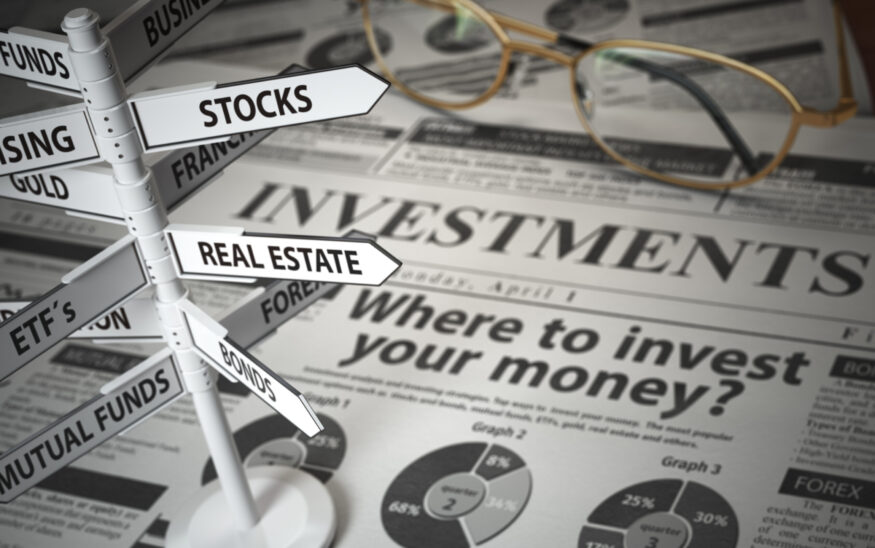7 Investment Strategies for 2023
2022 flipped investment strategies on their heads — but with a few lessons learned, 2023 is looking much brighter.
Fred Taylor //December 12, 2022//


7 Investment Strategies for 2023
2022 flipped investment strategies on their heads — but with a few lessons learned, 2023 is looking much brighter.
Fred Taylor //December 12, 2022//
In 1992 Queen Elizabeth was famous for saying “annus horribilis” when three of her four children’s marriages dissolved and Windsor Castle caught fire – a horrible year. The same could be said about 2022 for investors and investment strategies. A portfolio invested 60% in stocks and 40% in bonds was down double digits, one of the worst years for these types of balanced accounts since the 1930s. Investors lost more money in the iShares 20+ Year Treasury Bond ETF than the S&P 500 Equity Index. This is an extremely rare phenomenon; investors, and their typical investment strategies, typically don’t lose more money in bonds during equity bear markets.
With the Federal Reserve aggressively raising short-term interest rates since March, there has been nowhere to hide in either the stock or bond markets. Wall Street analysts recently readjusted their FED Funds estimates higher. It appears short-term interest rates are headed to 5% by the end of the first quarter of 2023. So, with this as a backdrop, how do maximize your investment strategies in the new year?
READ — Finding the Silver Lining Amidst Rising Interest and Inflation Rates
Time is on Your Side
There is an old adage: It is time in the market that makes you money, not timing the market. This is particularly relevant in the case of 401(k) and IRA accounts. If you are five or more years away from retirement, you can afford to have a higher allocation to stocks than bonds, and quite frankly, you should. One way to take advantage of the current bear market is to dollar cost average by adding more equities in your 401(k)s with every paycheck or to your IRAs annually. If you choose this option, be sure to set up a dividend reinvestment plan. If the markets continue to get cheaper, at least you are adding additional shares at lower prices. Eventually, when the markets turn around, you will have added to your equity holdings during a tough bear market.
Diversification May Work Better Next Year
This is the first year in three decades where diversification did not work. You lost less money in the S&P 500 ETF than in a 60/40 balanced account comprising stocks and bonds. Bonds normally act as an effective hedge against a weak stock market or financial crisis; however, in 2022, bonds were hurt by rising interest rates.
There could be good news though for 2023. After all these rate increases, and with treasury bills yielding 4% (a year ago, they were zero), the odds of bonds producing positive returns next year have improved dramatically. With the yield curve being inverted, you can take less duration/interest rate risk because short-term treasuries pay more in interest than 10 and 30-year treasury bonds today. Once the Federal Reserve stops raising rates, you can buy longer-term bonds and lock in rates, but until that happens, there is no reason to add interest rates or credit risk to your bond portfolios.
READ — Does an Inverted Yield Curve Portend a Recession?
Maximize Retirement Account Contributions
Bear markets are the best time to optimize your investment strategies and invest the maximum you can. Try to put 10%-12% of your paycheck into your 401(k) every month. Not only is it a great way to save money, but it lowers the amount you get taxed from paycheck to paycheck. For example, if you make $100,000 a year and put $10,000 into your 401(k), you will only get taxed on $90,000, not the full $100,000 – A win-win. If you haven’t opened a Roth IRA or regular IRA yet, now is a great time to do so. Next year you can contribute an extra $500. If you are over 50, you can contribute $7,500 in 2023.
Pay Off Debt
If you have cash earning close to zero in a checking or savings account at a bank, use this extra cash to pay off high-interest credit card balances. If possible, it is best to avoid paying double-digit interest rates. Additionally, if you have any adjustable-rate loans, like a home equity line or an auto loan, you could see a considerable increase in your monthly payments if your loans are set to readjust higher. If you have student loan debt above 6%, it may be best to pay that off too.
Buy Dividend-Paying Stocks
Technology and other riskier stocks were great investments when interest rates and inflation were low, but now that has changed. With massive inflation and interest rates up 4% in 2022, these stocks are down twice as much as dividend-paying stocks. The market is now favoring companies that pay dividends, and more importantly, have the cash to increase their dividends annually. If we have a recession in 2023, defensive sectors such as healthcare, energy, and consumer staples will be a safer place to focus your investment strategies until conditions improve.
Buy Short-Term Bonds vs. Cash
For the first time in 14 years, you can get paid 4% on your cash if you invest in treasury bills that mature in less than one year. You buy them at a discount, and when they mature, you get all of your principal back. For example, if you invest $10,000, you only pay $9,900; six months later, you get your $10,000 back with a $1,000 gain (yield or interest earned/accrued).
Buy I-Bonds-Savings Bonds
These savings bonds offer a very attractive interest rate of 6.89% until April 2023. However, there are two things you need to know: 1) you can only buy them in $10,000 increments per family member, and 2) you can only buy them directly from the U.S. government on their website.
The Bottom Line
No question about it: 2022 was a challenging year to be a conservative investor. As Winston Churchill was famous for saying during the start of World War II, “Now is not the end. It is not even the beginning of the end. But it is, perhaps, the end of the beginning.” The same could be said for the Federal Reserve’s mission to bring down inflation by raising short-term interest rates. If inflation continues to come down next year, they can stop hiking interest rates. Once this happens, investors may feel more comfortable investing in bonds with higher yields and stocks with lower price-earnings ratios. Wouldn’t that be a nice change in 2023?
 Frederick Taylor is a Partner, Managing Director at Beacon Pointe Advisors, LLC. The information contained in this article is for general informational purposes only. Opinions referenced are as of the publication date and may be modified due to changes in the market or economic conditions and may not necessarily come to pass. Forward-looking statements cannot be guaranteed. Past performance is not a guarantee of future results.
Frederick Taylor is a Partner, Managing Director at Beacon Pointe Advisors, LLC. The information contained in this article is for general informational purposes only. Opinions referenced are as of the publication date and may be modified due to changes in the market or economic conditions and may not necessarily come to pass. Forward-looking statements cannot be guaranteed. Past performance is not a guarantee of future results.
Beacon Pointe has exercised all reasonable professional care in preparing this information. The information has been obtained from sources we believe to be reliable; however, Beacon Pointe has not independently verified or attested to the accuracy or authenticity of the information. The discussions, outlook, and viewpoints featured are not intended to be investment advice and do not consider specific investment objectives or risk tolerance you may have. All investments involve risks, including the loss of principal. Consult your financial professional for guidance specific to your circumstances. Beacon Pointe provides links for your convenience to other providers’ websites. Beacon Pointe is not responsible for errors or omissions in the material on third-party websites and does not necessarily approve or endorse the information provided.


























